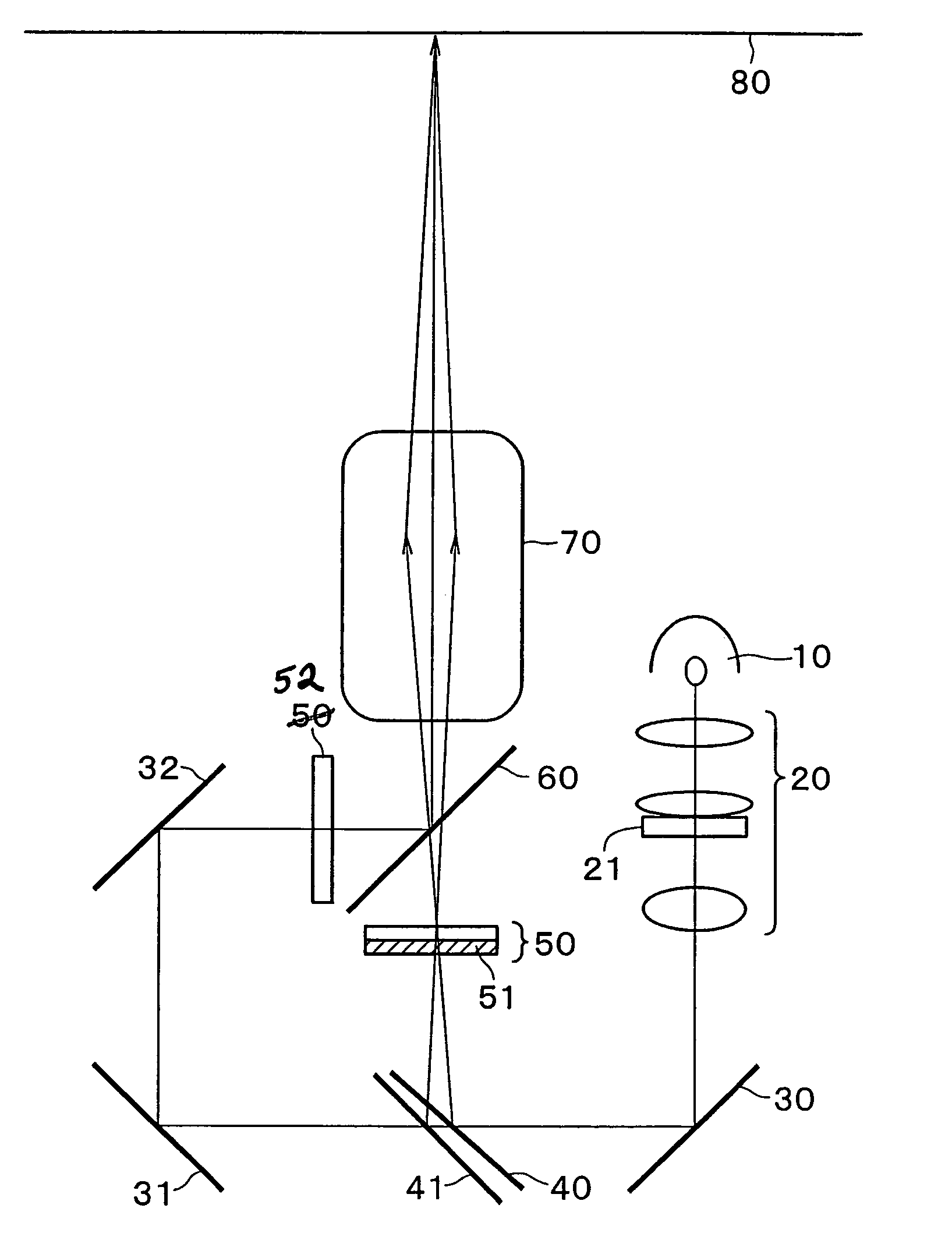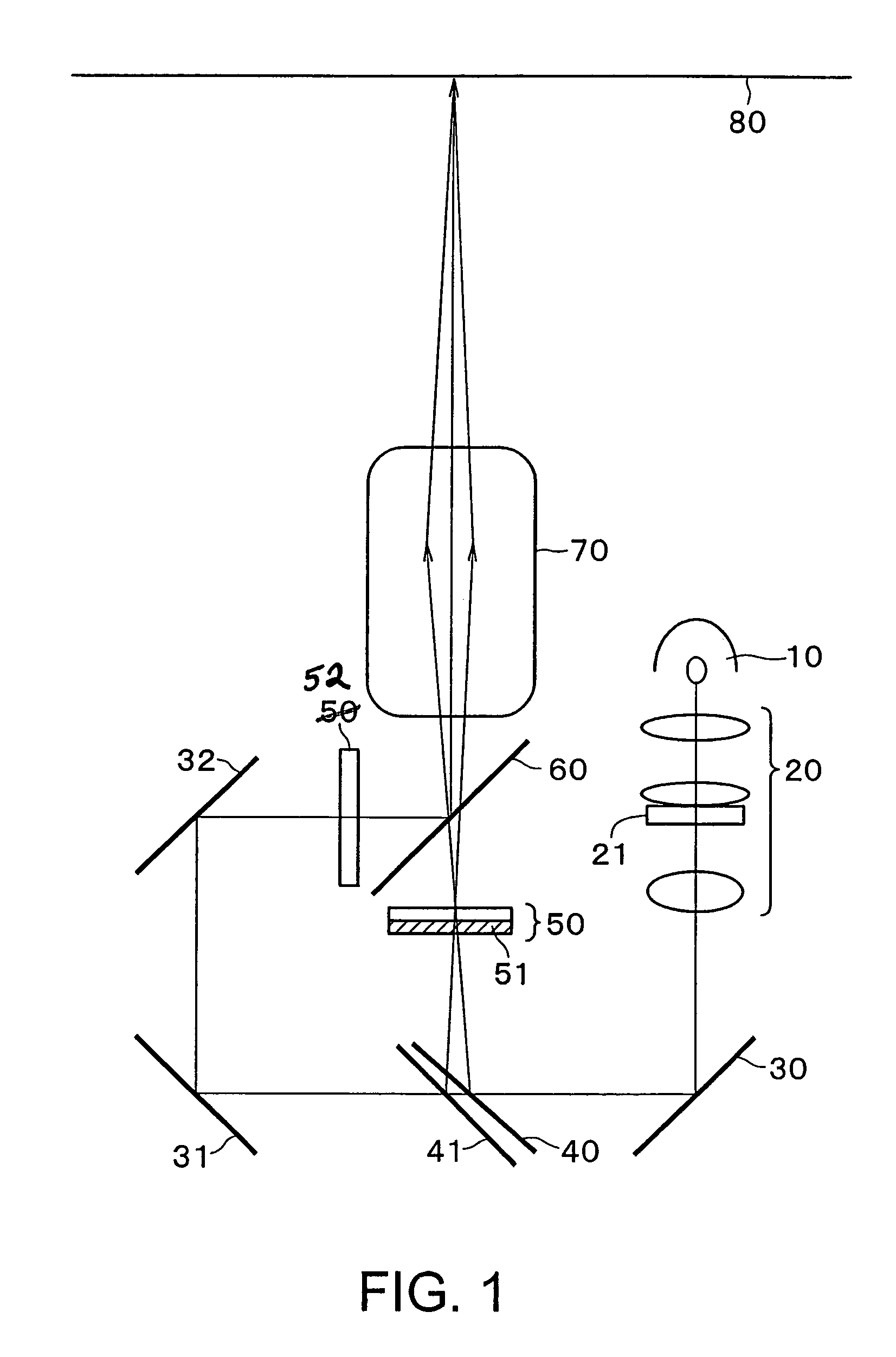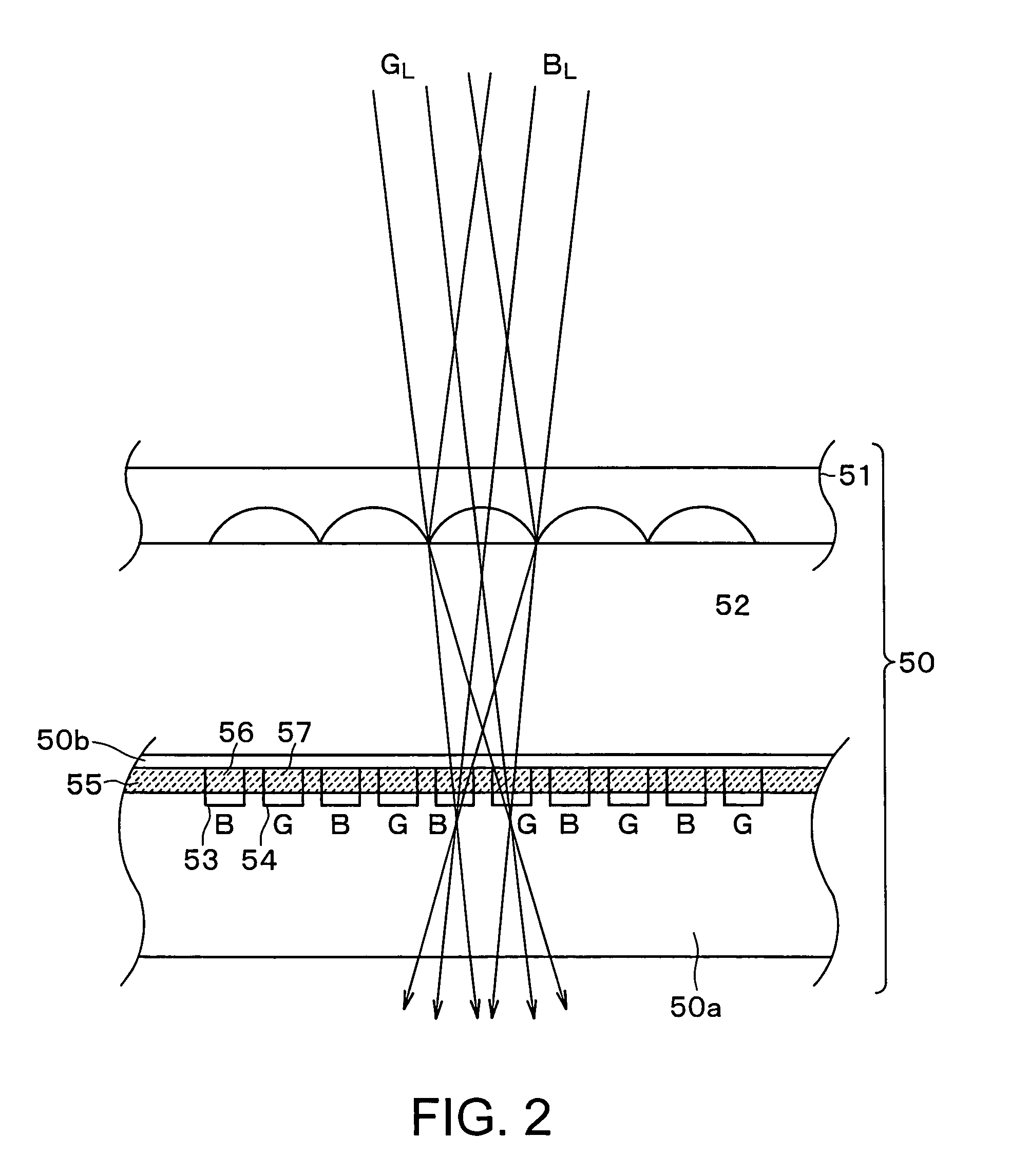Image display
a technology of image display and display device, which is applied in the field of image display device, can solve the problems of so-called color breakup, increase in the cost of components significant deterioration of light utilization efficiency, so as to reduce the response speed required of spatial light modulator, reduce the light utilization efficiency, and improve the definition
- Summary
- Abstract
- Description
- Claims
- Application Information
AI Technical Summary
Benefits of technology
Problems solved by technology
Method used
Image
Examples
first embodiment
[0050]As a first embodiment of an image display device according to this invention, an example in which this invention is applied to a two-plate projection-type image display device will be described.
[0051]The two-plate projection-type image display device has transmission liquid crystal elements 50, 52 as spatial light modulators, a dichroic mirror 60 as color combination means, dichroic mirrors 40, 41 as color separation means to the two transmission liquid crystal elements 50, 52, and the dichroic mirrors 40, 41 and a microlens array 51 as color separation and condensation means to the one transmission liquid crystal element, as shown in FIG. 1.
[0052]In the two-plate projection-type image display device, illuminating light emitted from a UHP lamp light source 10 as an illuminating light source becomes incident on an illuminating optical system 20 having functions such as correction of the cross-sectional shape of luminous flux, equalization of intensity, and control of divergence...
second embodiment
[0062]As a second embodiment of the image display device according to this invention, an example in which this invention is applied to a two-plate projection-type image display device will be described.
[0063]The two-plate projection-type image display device in the second embodiment has transmission liquid crystal elements 50, 52 as spatial light modulators, a polarized light beam splitter 61 as color combination means, dichroic mirrors 40, 41 as color separation means for the two transmission liquid crystal elements 50, 52, and the dichroic mirrors 40, 41 and a microlens array 51 as color separation and condensation means to the one transmission liquid crystal element 50, as shown in FIG. 5.
[0064]First, illuminating light emitted from a UHP lamp light source 10 constituting an illuminating light source together with a red LED light source 11, which will be described later, becomes incident on an illuminating optical system 20 having functions such as correction of the cross-section...
third embodiment
[0076]As a third embodiment of the image display device according to this invention, an example in which this invention is applied to a two-plate projection-type image display device will be described.
[0077]The two-plate projection-type image display device in the third embodiment has reflection liquid crystal spatial light modulators 101, 102 as spatial light modulators, a polarized light beam splitter 140 and specific wavelength range linear polarization rotation means (multilayer phase difference filter) 120 as color combination means, dichroic mirrors 40, 41 as color separation means for the two reflection liquid crystal spatial light modulators 101, 102, and a transmission polarization-selective holographic optical element 100 as color separation and condensation means to the one reflection liquid crystal spatial light modulator, as shown in FIG. 9.
[0078]In this two-plate projection-type image display device, first, illuminating light emitted from a UHP lamp light source 10 as ...
PUM
| Property | Measurement | Unit |
|---|---|---|
| switching frequency | aaaaa | aaaaa |
| wavelength range | aaaaa | aaaaa |
| thickness | aaaaa | aaaaa |
Abstract
Description
Claims
Application Information
 Login to View More
Login to View More - R&D
- Intellectual Property
- Life Sciences
- Materials
- Tech Scout
- Unparalleled Data Quality
- Higher Quality Content
- 60% Fewer Hallucinations
Browse by: Latest US Patents, China's latest patents, Technical Efficacy Thesaurus, Application Domain, Technology Topic, Popular Technical Reports.
© 2025 PatSnap. All rights reserved.Legal|Privacy policy|Modern Slavery Act Transparency Statement|Sitemap|About US| Contact US: help@patsnap.com



